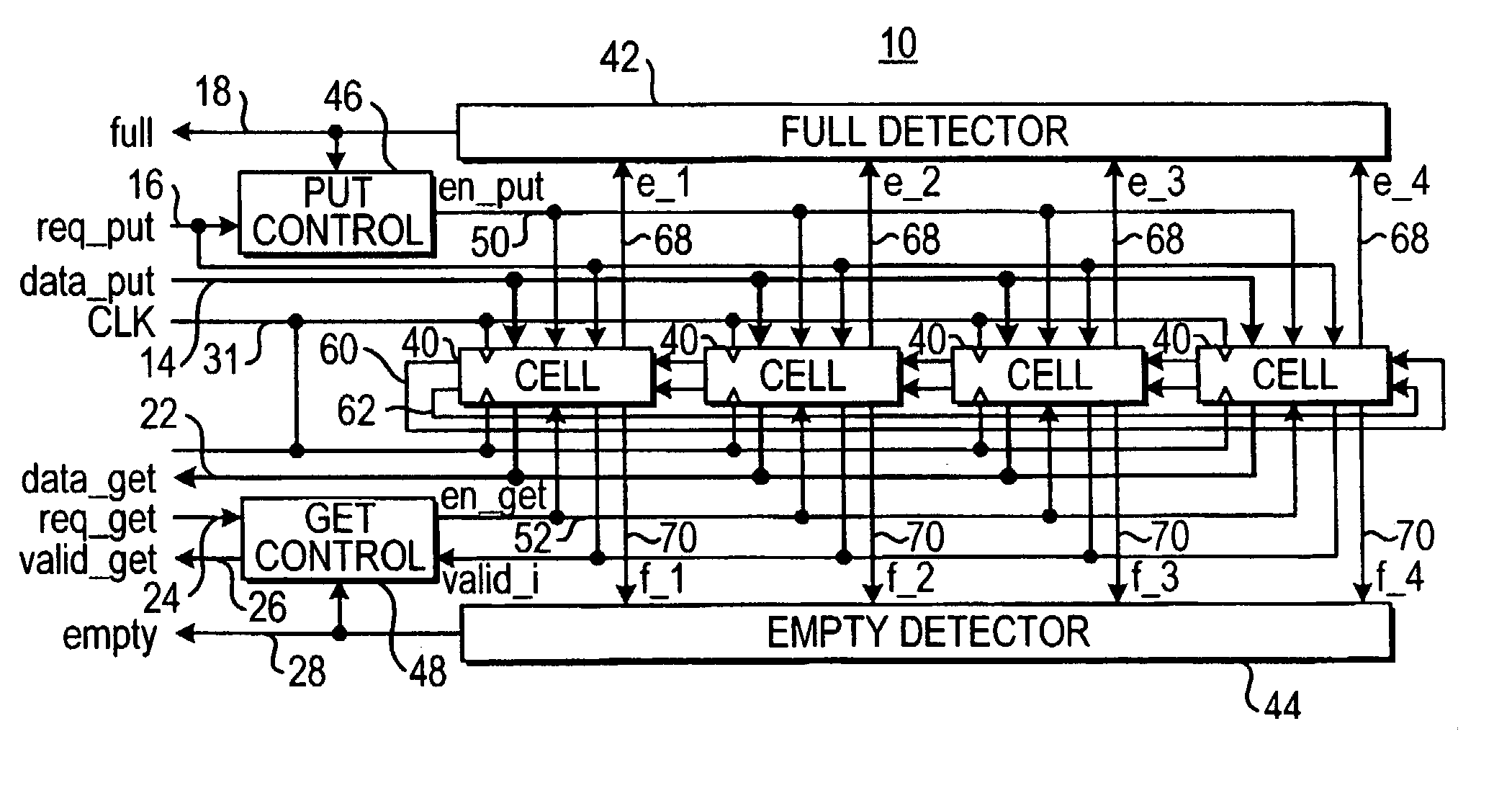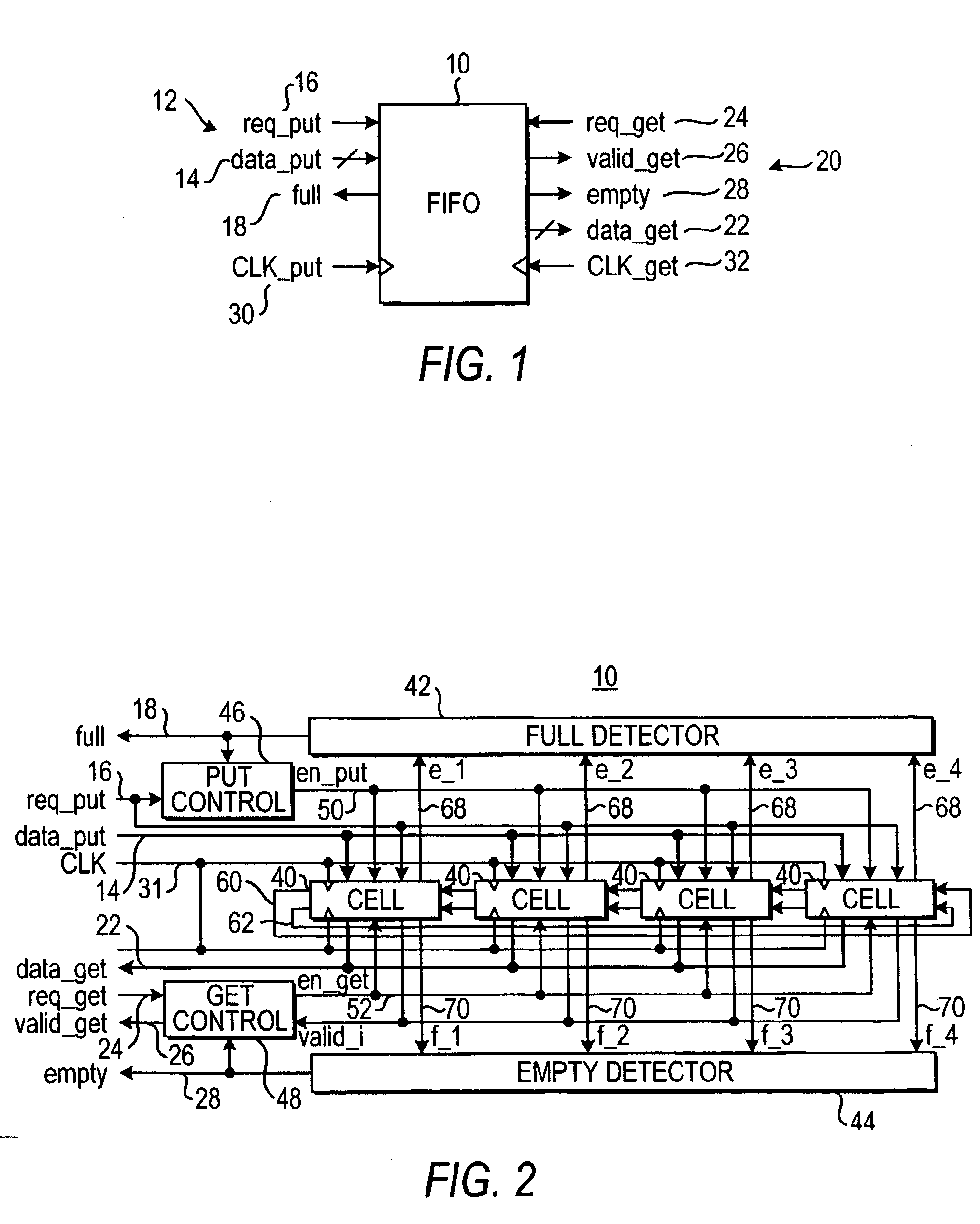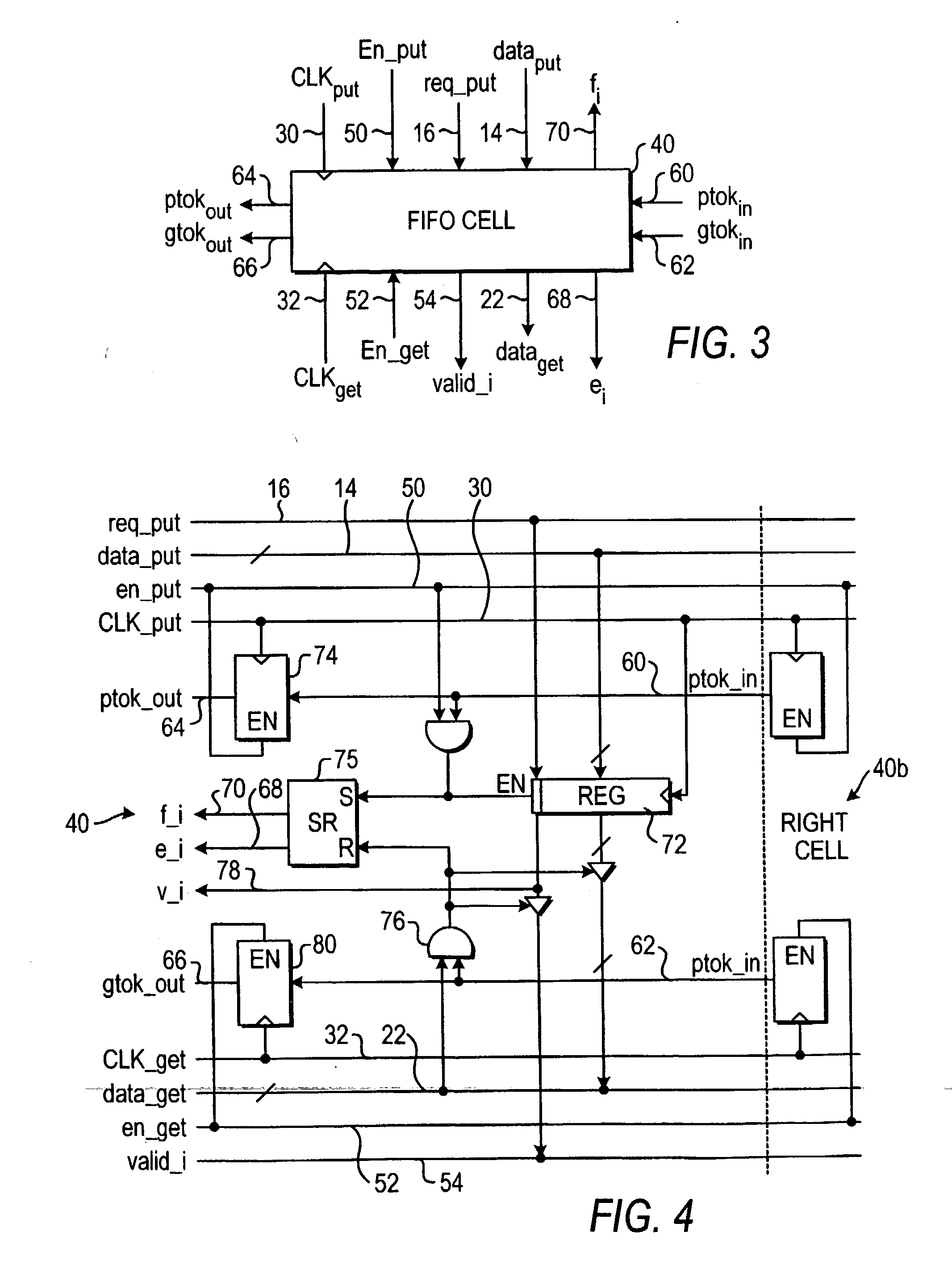Low latency fifo circuit for mixed clock systems
- Summary
- Abstract
- Description
- Claims
- Application Information
AI Technical Summary
Benefits of technology
Problems solved by technology
Method used
Image
Examples
Embodiment Construction
[0083] In order to evaluate the performance of the various FIFO designs presented in this paper, the circuits were simulated using HSpice (.COPYRGT. Avant! Corporation), assuming implementation in 0.6 .mu.m HP CMOS technology at 3.3V at and 300K.
[0084] The behavior of a FIFO of capacity 8, with a data item of width 8 was simulated. For en.sub.put, req.sub.put, en.sub.get and data.sub.put, buffering was used to drive the capacitance of all cells. For valid.sub.i and data.sub.put, in addition to the load provided by the appropriate latching / result logic, a load contributed by long wires was modeled. The wire load was estimated to be equivalent to two inverters per cell.
[0085] The results for the maximum clock frequencies at which each circuit can be clocked are presented in Table 1.
1TABLE 1 Maximum clocking frequencies Version CLK.sub.in CLK.sub.out Single Clock 10 584 MHz Mixed Clocks 100 523 MHz 554 MHz Relay Station 300 562 MHz 552 MHz
[0086] All of the designs were clocked to over ...
PUM
 Login to View More
Login to View More Abstract
Description
Claims
Application Information
 Login to View More
Login to View More - R&D
- Intellectual Property
- Life Sciences
- Materials
- Tech Scout
- Unparalleled Data Quality
- Higher Quality Content
- 60% Fewer Hallucinations
Browse by: Latest US Patents, China's latest patents, Technical Efficacy Thesaurus, Application Domain, Technology Topic, Popular Technical Reports.
© 2025 PatSnap. All rights reserved.Legal|Privacy policy|Modern Slavery Act Transparency Statement|Sitemap|About US| Contact US: help@patsnap.com



